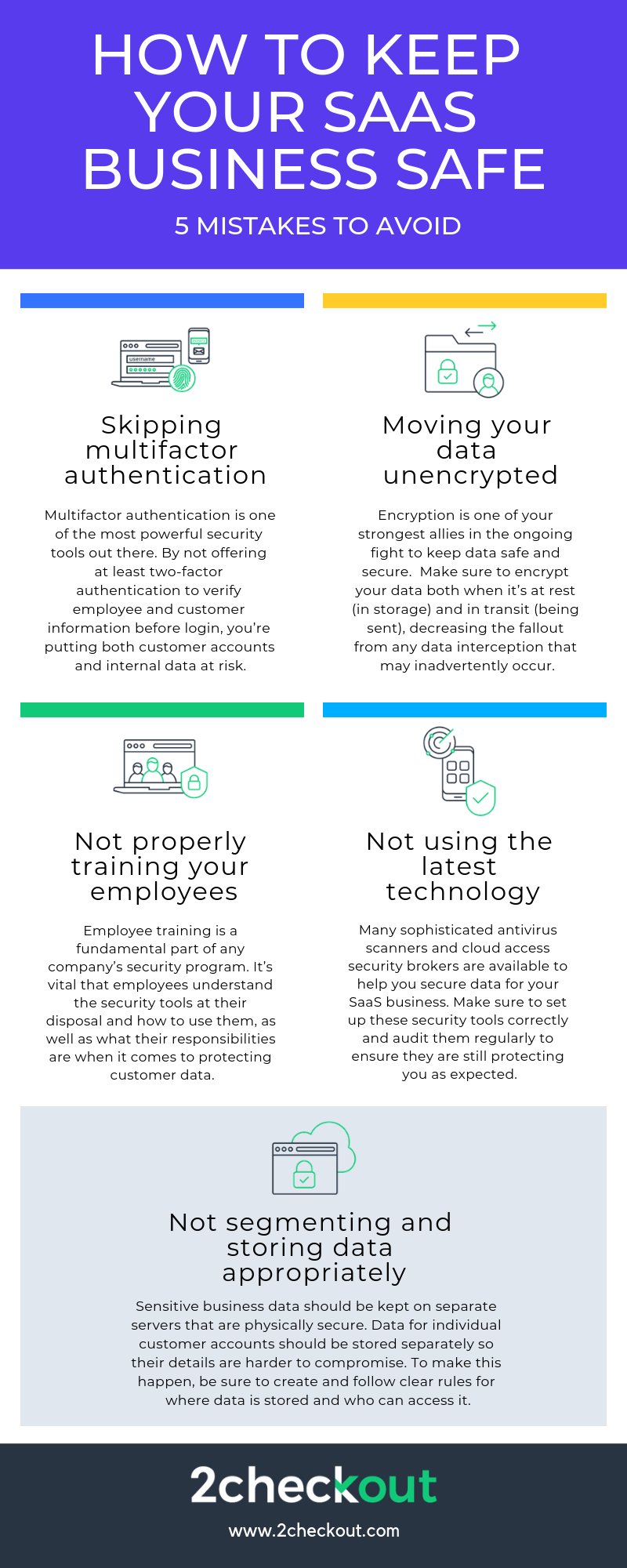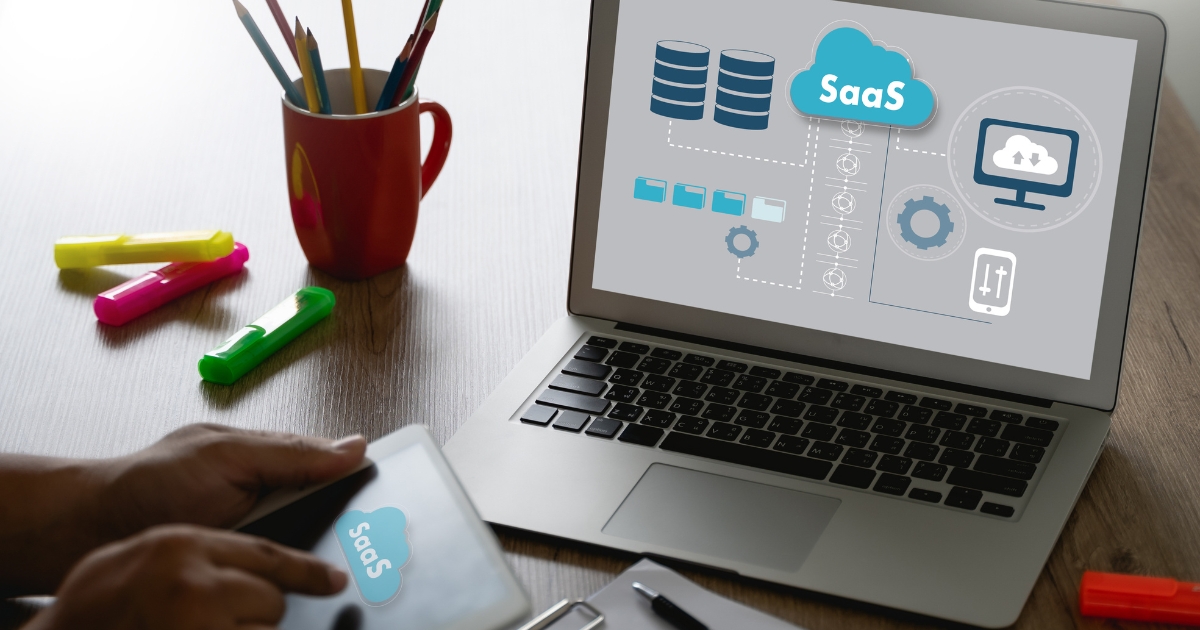As a SaaS provider, you need to store plenty of sensitive data: not just information related to your own business operations, but also customer data. In a complex world that seems to see new ransomware attacks and data breaches every week, all SaaS businesses must take measures to keep their own internal data—as well as customer data—safe and secure, especially as tougher compliance standards such as GDPR come into force.
But with security technologies changing fast and hackers constantly developing new techniques, how can SaaS companies keep up?
This blog post covers five common mistakes you must avoid if you want to protect your SaaS business with the latest tools in a rapidly evolving security landscape.
Mistake #1: Not Using Multifactor Authentication
Multifactor authentication is one of the most powerful security tools you have at your disposal. If you’re not offering at least two-factor authentication (2FA) to verify employee and customer information before allowing login, you’re putting both customer accounts and internal data at risk.
Mistake #2: Not Segmenting and Storing Data Appropriately
Storing all your information in one place is a recipe for data disaster. If one breach occurs, all the data you have stored will be at risk. Sensitive business data should be kept on separate servers that are physically secure. Data for individual customer accounts should be stored separately so customer details are harder to compromise or exposed to other customers. To make this happen, be sure to create and follow clear rules for where data is stored and who can access it. An important corollary to data segmentation is the need to maintain separate accounts for internal development, testing and production instances: you should never test new tools in production.
Mistake #3: Giving Employees Free Rein
Employee training is a fundamental part of any company’s security program. No matter how secure your systems are, just one malicious or simply ignorant action by an employee could cause a huge breach. It’s vital that your employees understand the security tools at their disposal and how to use them, as well as what their responsibilities are when it comes to protecting customer data. Pay particular attention to remote employees or those working from home: research has found that “48 percent of office worker respondents admit to circumventing remote work policies… [and] 82 percent of office workers admit to going around their VPN when working remotely.” Create clear IT security policies and make it easy, rather than cumbersome, for remote workers to follow them: of course, no one is going to work through a VPN connection that’s incredibly slow. Check out this cloud computing policy template for an example of what you could implement at your company.
Mistake #4: Not Using the Latest Technology
Many sophisticated antivirus scanners and cloud access security brokers (CASBs) are available to help you secure data for your SaaS business. According to Gartner, “CASBs provide a single control point to set policy, monitor behavior and manage risk across the entire set of enterprise cloud services being consumed concurrently, regardless of user or devices.” Make sure to set up these security tools correctly and audit them regularly to ensure they are still protecting you as expected. In addition, be sure to back up data frequently and update your tools on a regular basis: not having the latest patches for various systems may expose you to security vulnerabilities.
Mistake #5: Moving Data Unencrypted
Encryption is one of your strongest allies in the ongoing fight to keep data safe and secure. Make sure to encrypt your data both when it’s at rest (in storage) and in transit (being sent), decreasing the fallout from any data interception that may inadvertently occur. Use the Advanced Encryption Standard (AES) 256-bit security, one of the most advanced encryption available, to get optimal benefit from encryption.
Are you making any of these security mistakes in your business? If so, take action to correct them now—or prepare to deal with the fallout from a data breach later.






